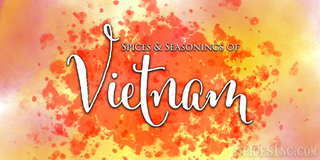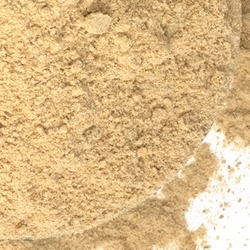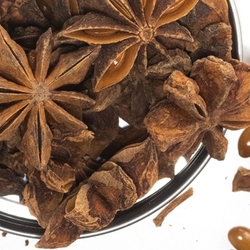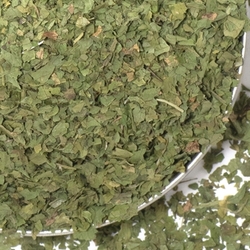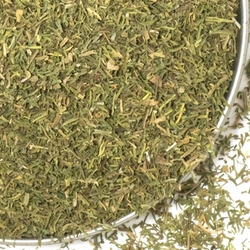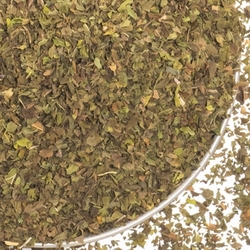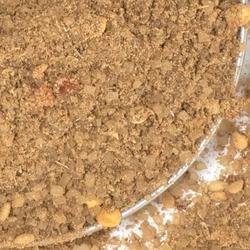Spices and Seasonings of Vietnam
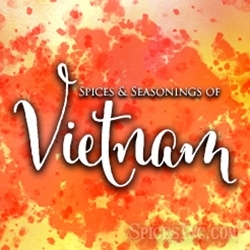
Vietnamese food in the United States is often reduced to rice and stir fry, but this is unfair to such an elaborately flavorful and unique cuisine. Compared to other cuisines, Vietnamese food is still a rather small part of the food culture in the US.
Vietnamese cuisine is considered one of the healthiest in the world. It focuses heavily on fresh ingredients, with few added fats, oils, or butters. Herbs and spices are selected carefully for optimum flavor and there are fewer blends used to ensure precise, careful portion control of every spice in each dish which is handmade with care. Of course, there are still fast food chains in Vietnam, but you are less likely to find its citizen indulging on these foods and more likely to find families crowded around the dinner table, eating a perfectly balanced meal. Fast food still isn't popular in this culture, which is a truly beautiful thing in this time full of fast food giants taking over food landscapes all over the globe.
Vietnamese cuisine, like Chinese cuisine, focuses on five flavors elements. These elements are sweet, sour, bitter, spicy, and salty. Practiced over centuries, the art of food making has been mastered and passed down through generations to today, leaving modern day Vietnamese chefs with a wide variety of knowledge about how to cook traditional meals. This knowledge gives chefs room to play as well, since they have already mastered these elements, and they can experiment to see new ways in which the elements work. This is where spices come in.
Vietnamese Herbs and Spices
This history of herb and spice use in Vietnam has a basis in geography, since this country is more isolated and historically was not a huge part of the spice trade. As a rule of thumb, anything you can find grown in Vietnam will be a good place to start looking at what is included in its cuisine. Things like chiles or chile powders were added later as spice traders expanded into Vietnam.
- Lemongrass is a popular flavor for fish, beef and poultry. This is a frequently used herb in many Vietnamese dishes.
- Cilantro is a key ingredient in the popular Vietnamese dish pho. Pho is so popular and common in Vietnam that this dish can be found even in street cars on the side of the road in Vietnam, sometimes priced as low as $1 USD. It's eaten for dinner in America, but in Vietnam pho is eaten for breakfast!
- Dill is used mostly in marinating meat or with fish. Its bright flavor pairs nicely with light fishes, like cod or haddock. It is most popular in northern Vietnam and is used in soups.
- Star Anise is used in soups and stews for that strong licorice flavor. It is a key ingredient in some meat dishes as well.
- Annatto Seeds are used frequently for coloring foods and to provide a little bit of lemony flavor.
- Ginger is an essential spice and is used almost as frequently as cilantro. It is popular in soups, but it can be used for meat-based dishes as well.
- Garlic is popular with pork, beef, and chicken. It helps mask any unpleasant scents the meat might have while also upping the savory flavors of the dish.
- Cinnamon is used frequently in soups, stews, and desserts.
- Galangal is popular on seafood, with shrimp and galangal being a classic combination.
- Mint is light and sweet, often giving that cooling, refreshing taste to Vietnamese dishes. It is the sweet component to many dishes.
- Black Pepper is very popular in Vietnamese cuisine. It is used in much the same way that black pepper is used in the United States. It is especially popular in soups and stews, but it pairs nicely with meat too. Black pepper in Vietnam was the sole source of spiciness before chiles were introduced but has not lost much popularity since the introduction of the fruit to the cuisine. Vietnamese people are quite proud of their peppercorns, as they should be.
- Chile Powder is used for color, but also for the spiciness. This is more popular in the Southern parts of Vietnam, as in the northern parts, black pepper still reigns as the spicy king.
- Coconut Sugar is popular in soups of southern Vietnam, but it is not used as frequently as rock sugar.
- Rock sugar is popular across the country as a sweetener, especially in drinks and desserts. It also has some savory applications.
- Salt is key in Vietnamese cooking, though it is used sparingly. There are very few dishes that aren't seasoned with salt. Despite this, Vietnamese cuisine is still considered so healthy because the amount of salt is very little when compared to American cuisine.
Vietnamese Seasoning Blends
Seasoning blends are not as popular as single spices in Vietnamese cuisine. Food is flavored with plenty of herbs and a dash or two of spices- spice blends aren't as prominent in this cuisine as they are in something like Indian cuisine. So we took matters into our own hands and created a spice blend that reflects the authentic nuance of Vietnamese cuisine. Our Vietnamese Pork Rub is inspired by the careful finesse Vietnamese chefs have mastered with cooking pork and pork dishes. Pork is a crucial part of the cuisine, and the exotic flavors popular in Vietnamese cuisine are represented here through this spice blend. Vietnamese Pork Rub can be used to season pork tenderloin or even grilled pork chops. It may also be used in pork gravies.
Vietnamese Sauces
It would be impossible to talk about Vietnamese food without talking about the use of sauces in the cuisine. Vietnamese cuisine is built on these rich, salty sauces for a base flavor, but cooks are also fond of using the sauces as a finishing touch.
- Fish sauce is a thick condiment used in nearly every Vietnamese dish available. You will find it squirted into pho, or on grilled pork dishes. It is also popular as a base for many soups and stews.
- Soy sauce is another component to Vietnamese food that deserves attention. Used often in vegetable dishes, soy sauce is full of salty deliciousness and umami flavor.
- Chile sauce is another common ingredient. It provides a nice kick, but it also provides a nice reddish color to some light vegetable soups or broths.
- Shrimp sauce is a shrimp and salt paste used for sautéing and in marinating meats.
Vietnamese food is one of the most flavorful, most underrepresented cuisines in the United States today. It is easy to avoid things we are unfamiliar with, but reading through this article, you may have found yourself nodding and recognizing that you already use many of these spices in your own cooking. Maybe you could even try your hand at a Bahn Mi Sandwich tonight!
Read More

